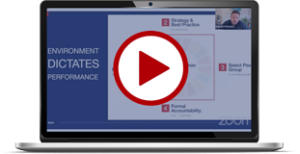When you know the foundations of your pitch, life and business get easier. It’s the most basic asset you have as an entrepreneur, a leader or change-maker; it’s also one of your most powerful. With strong foundations in place you can easily give a keynote talk, create a brochure, build a new product, author a book or do game-changing deals.
The most important step is using these foundations in a nice logical order to share your ideas with others in a way that allows people to get enrolled in your vision.
There are many ways to structure a pitch but here’s one particular way that takes your idea and turns it into a journey for the person listening:
Who are you?
Make sure it’s clear to your audience who you are and why you’re worth listening to. You could state something that reinforces yourself, a respected friend who might introduce you, you could state your qualifications or any industry awards you hold.
What’s the problem?
The reason you’re in business is because you want to address a problem in the world. If there’s no problem, there’s no business. Try and show the problem using a story. Is it something you’ve personally experienced? Richard Branson tells the story about how he was stranded in an airport and wondered if there was a better way to run an airline.
What’s the solution?
Suggest your way of solving this problem and share your ideas freely. You might even explain the current solutions in place to solve this particular problem along with the advantages you have over them. Educate people on the key insights you have.
What do you want?
Finally, get them to share what you need in order to take the idea forward. Be specific, be bold and be clear about what you want and why. If you’re a dragon’s den fan, you know that 90% of entrepreneurs start their pitch with “I want this much money for this much equity”. This never works out because the dragons need to first be enrolled onto the business vision for them to see the real value before they part with their money. Entrepreneurs who end their pitch with what they want, always get what they want.
What’s the bigger vision?
Don’t finish a pitch on a flat note. You want to finish with a story, an idea or a vision for the future that gets people excited and to want to work with you. People don’t often remember everything you said but they surely remember the way you left them feeling. Be sure to deliberately leave people feeling something positive.
You can use this structure to write out a pitch and rehearse it (at least a thousand times). It might seem a little too structured at first; but with practice you will develop so much clarity in your own mind that you’ll be able to talk about your business naturally and still hit these bases in the right order.
Come along and watch entrepreneurs use this very same pitch architecture this month at PitchFest. PitchFest is an evening event featuring ten entrepreneurs from the Key Person of Influence Accelerator, who pitch their idea to an open-invitation audience of over 100 business owners and high-profile judges.
This year’s judging panel includes, Julia Langkraehr (built 3 multimillion-pound businesses across Europe), Clive Rich (brokered £10bn worth of deals with Apple, Vodafone, Microsoft etc.), Dale Murray CBE (launched Vodafone NZ and introduced mobile top-ups) and Frank Wessely (advises a number of FTSE quoted companies.
You can get your tickets to PitchFest 17 here.












